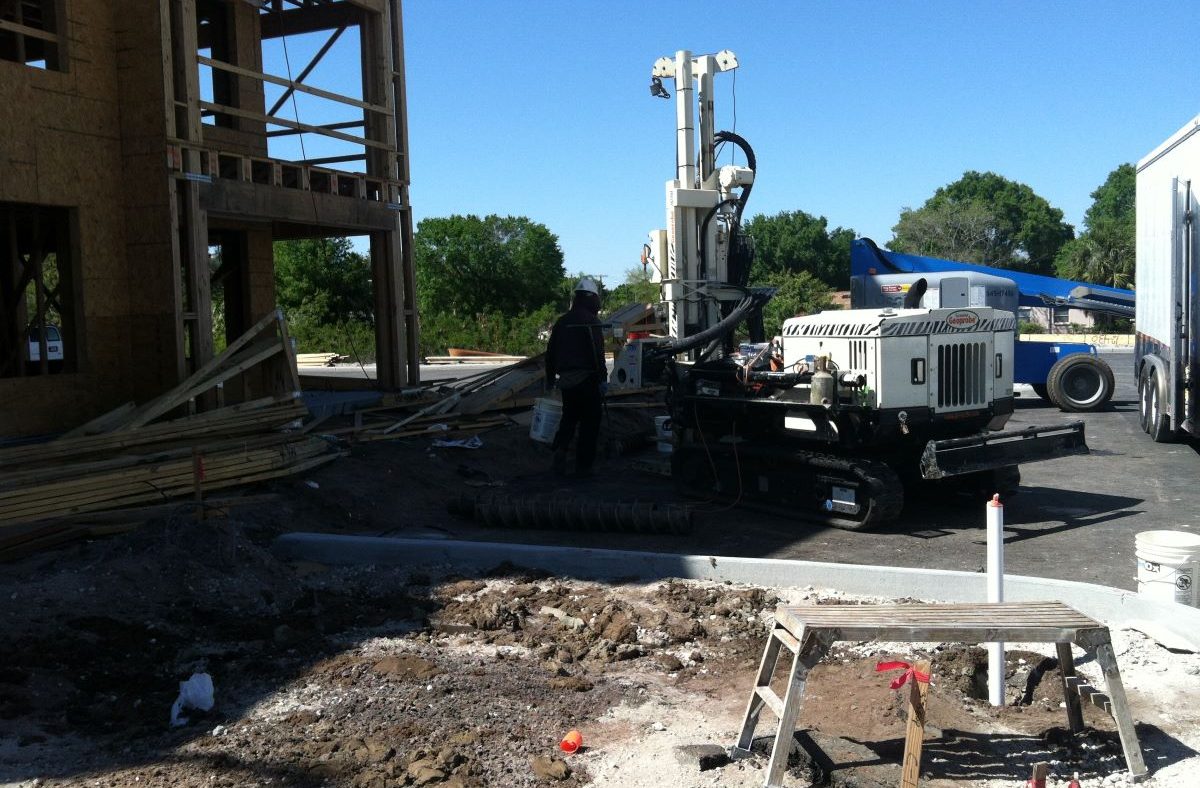The use of in-situ remediation technologies has steadily increased over the past 20 years. These technologies are versatile in that they can be injected into the subsurface or mixed with soil as a liquid, powder, or gas. Some patented products include time-release compounds for more targeted remediation.
In-situ remediation technologies have several advantages over other contemporary technologies such as groundwater pump and treat, air sparge/soil vapor extraction (AS/SVE), and multi-phase extraction (MPE) systems. However, in-situ technologies also have several disadvantages.
Advantages of In-Situ Remediation
- Typically, faster results than pump and treat or AS/SVE systems
- Lower long-term costs
- Applicable to a wide range of contaminants (e.g. chlorinated solvents, pesticides, petroleum hydrocarbons, PCBs, wood preservatives)
- Contaminants usually destroyed on-site
- Heat generation increases microbial activity for natural breakdown of contaminants
Disadvantages of In-Situ Remediation
- Generally high up-front costs
- Limited coverage in complex lithology
- Potential for UST system component damage
- Short persistence of some oxidants due to rapid reactions
- Potential contaminant mobilization
- Potential for increased total dissolved solids (TDS), nitrates, sulfate, chloride, pH, etc. (water quality concerns)
- Health and safety issues (respiratory and other exposures)
Three Types of Injectants
1. Chemical
Chemical injections rely on chemical reduction/oxidation (Redox) reactions to break down contaminants within soil and groundwater. These types of injectants generally include hydrogen peroxide (most common), permanganate, persulfate, and ozone.
- Hydrogen peroxide – reacts with iron catalysts in the soil to produce Fenton’s Reagent. The resulting hydroxyl radicals break down petroleum bonds within the subsurface. The reaction time is rapid and generates heat, which can promote natural microbes in soil. Hydrogen peroxide generally requires a low soil pH. Contaminants treated include chlorinated solvents, pesticides, petroleum hydrocarbons, PCBs, and wood preservatives.
- Permanganate – utilizes either potassium permanganate or sodium permanganate depending on solubility requirements. This approach has a prolonged reaction time, allowing increased possibility of contact with contaminants in the subsurface and is useful across a wider range pH range than hydrogen peroxide. Although this approach is less expensive than hydrogen peroxide, it is also weaker than hydrogen peroxide reagents. Contaminants treated include chlorinated solvents, PAHs, phenolic compounds, and most petroleum hydrocarbons (except benzene).
- Persulfate – consists of either sodium persulfate or potassium persulfate. This approach has a slower reaction time than hydrogen peroxide and generates innocuous by-products. Hydraulic fracturing is often utilized to access subsurface formations for persulfate treatment. Contaminants treated mainly include BTEX.
- Ozone – applied as either a gas through sparge wells or injected as a liquid. The residence time of ozone within the subsurface is very short (minutes). Ozone usage also involves the potential for by-product gas generation and volatilization. Contaminants treated include BTEX and PAHs, and limited efficacy with MTBE.
2. Surfactant
The application of surfactants will flush contaminants from the soil matrix, allowing for removal of the contaminants via extraction. Common surfactants include detergents and co-solvents (typically alcohols). The process is very similar to how laundry detergents remove dirt and stains within a washing machine. This approach is often used in conjunction with other remedial technologies.
3. Biological
- Aerobic Bioremediation – consists of the injection of aerobic bacteria and nutrients into the subsurface to promote contaminant breakdown. This approach requires significant analysis of existing subsurface nutrients, organisms, and oxygen content, and is often utilized as a bioaugmentation amendment along with other products to promote oxygen in the subsurface necessary for the organisms. Contaminants treated include petroleum hydrocarbons and other compounds including MTBE.
- Anaerobic Bioremediation – consists of the injection of anaerobic bacteria and nutrients to promote contaminant breakdown. As with aerobic bioremediation, anaerobic bioremediation requires analysis of existing subsurface nutrients, organisms, and oxygen content; however, the treatment time is longer than the aerobic approach. Contaminants treated include chlorinated solvents, pesticides, explosives, and hexavalent chromium.
Things to Consider When Evaluating the Potential Use of In-Situ Remediation Technologies
- Strength of the oxidant
- Potential contact time with contaminants
- Hydrogeologic conditions
- Soil reactivity
- Injection rate – want to avoid injectant resurfacing (daylighting)
- Drinking water standards for inorganic compounds
- State-specific injection regulations
Each in-situ approach has its strengths and weaknesses. It is important to have a firm understanding of site conditions to ensure that the right technology is selected to effectively remediate the site.
To learn more about VERTEX’s Remediation Management & Development Consulting services or to speak with an Environmental Expert, call 888.298.5162 or submit an inquiry.
Author: Lauri Fern Glinsky



